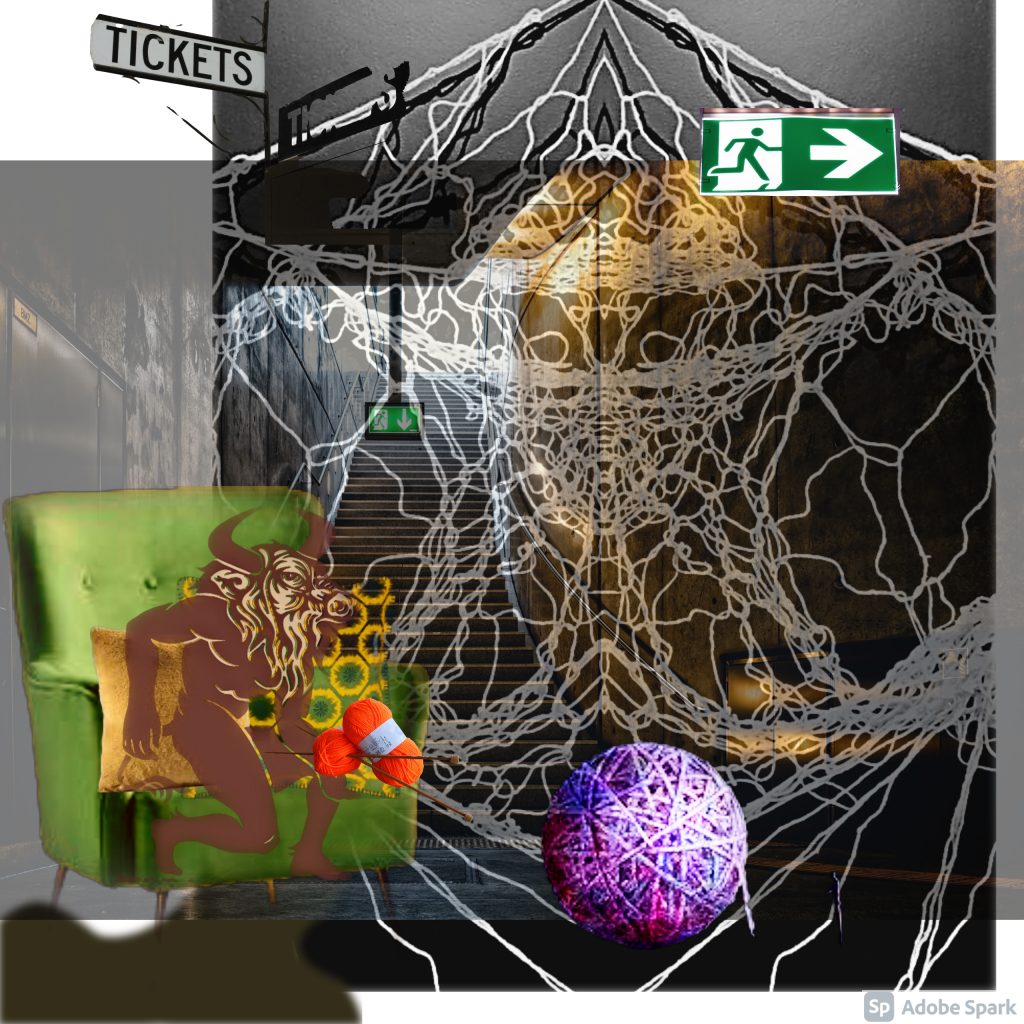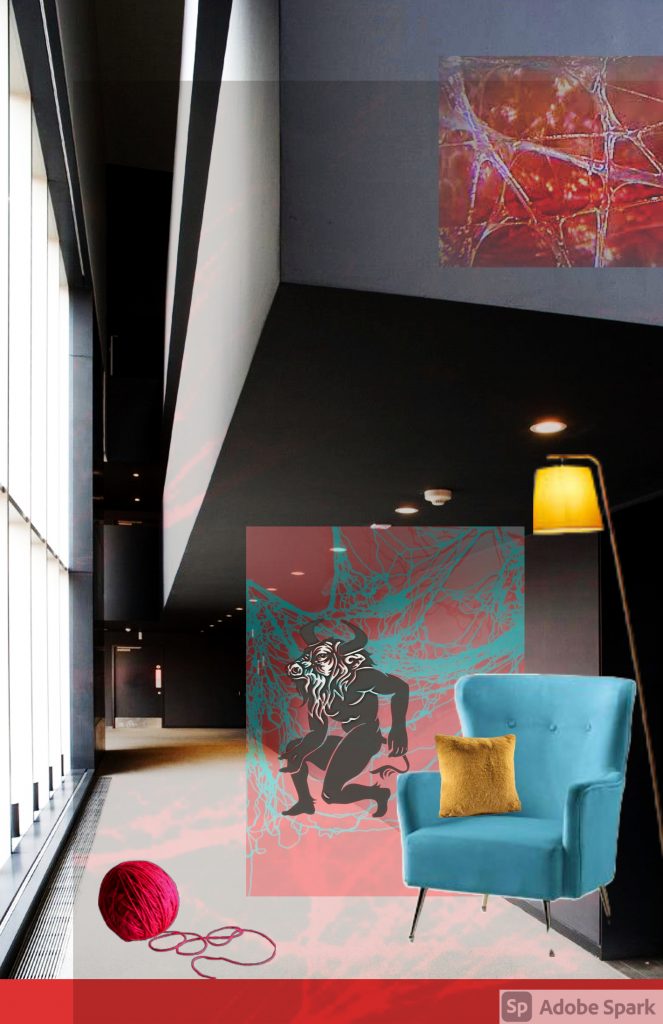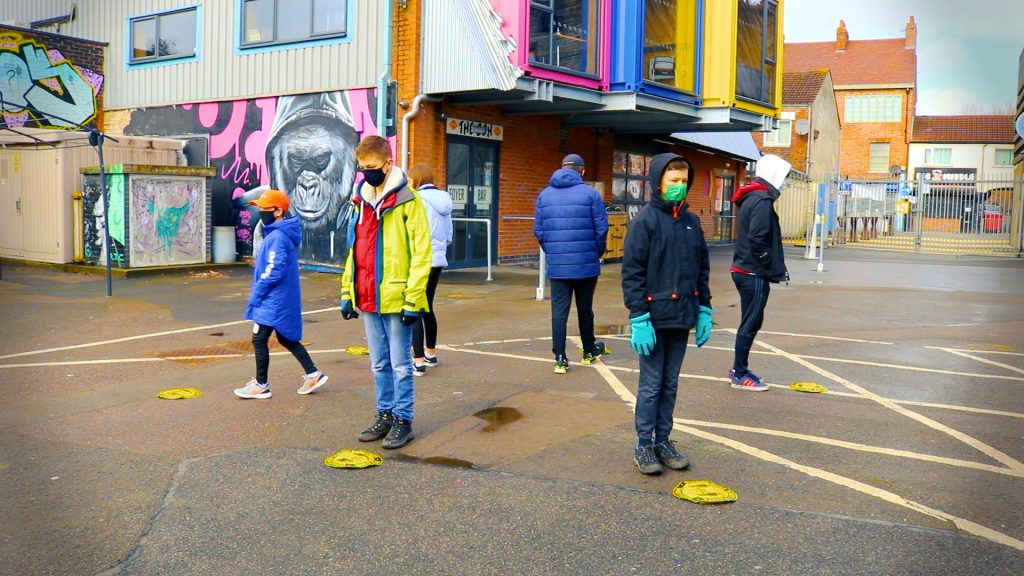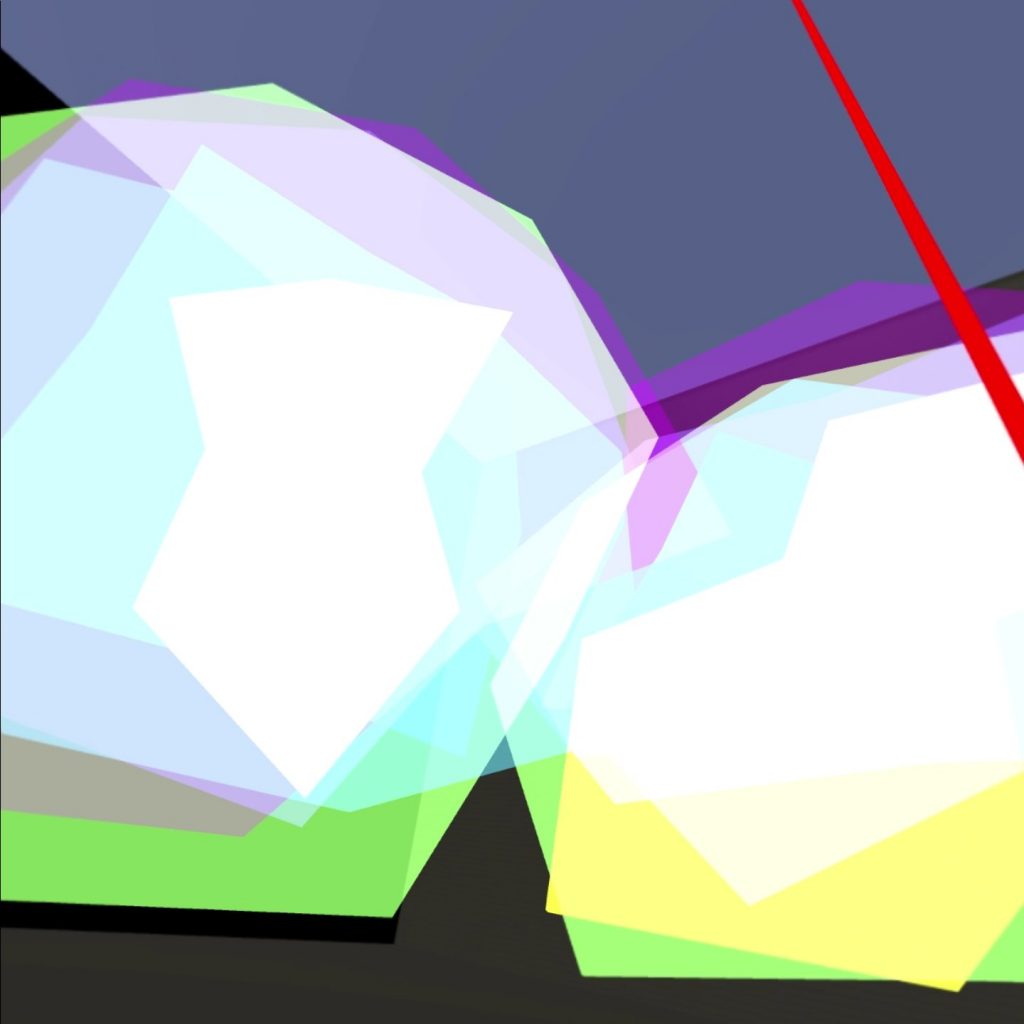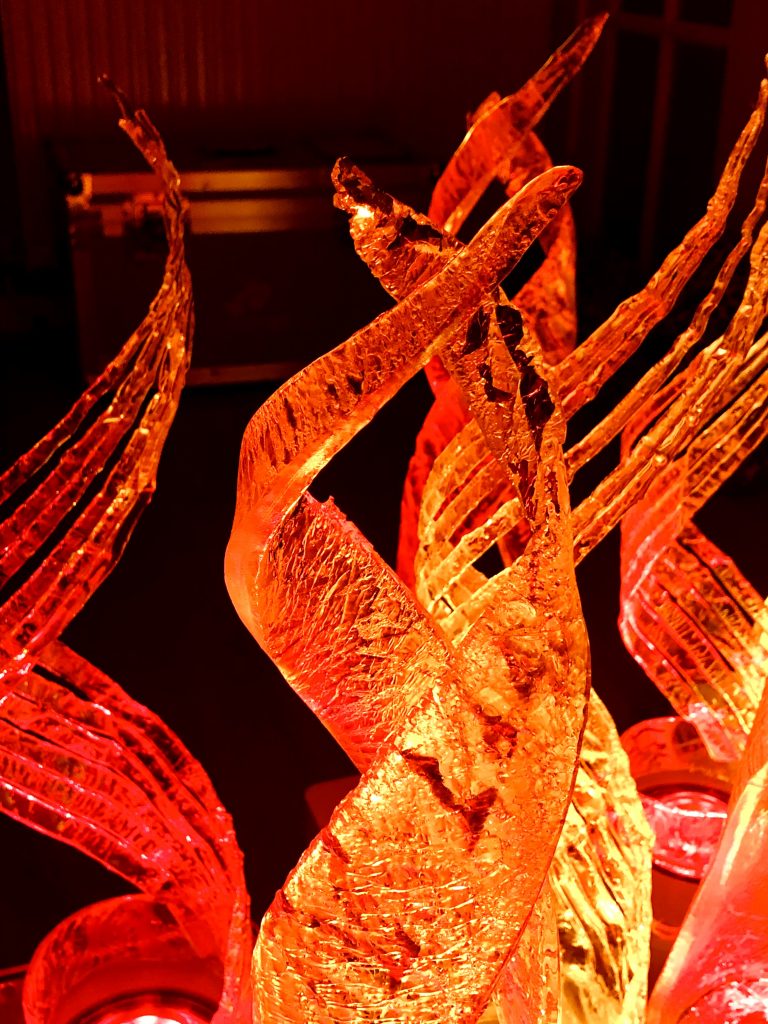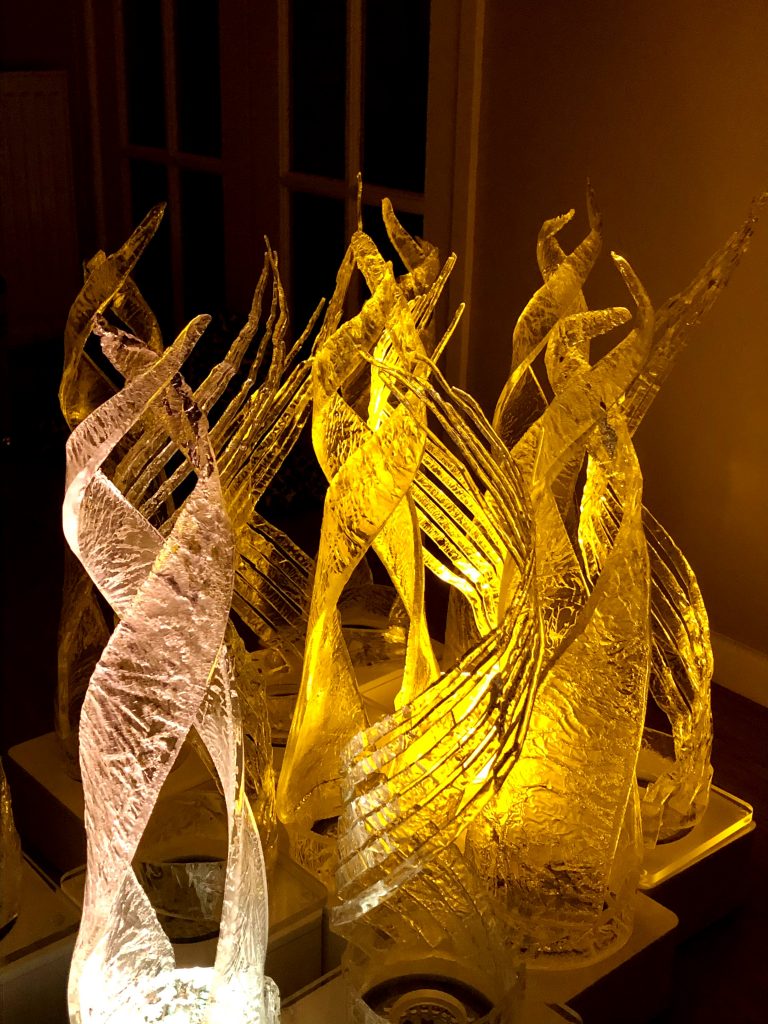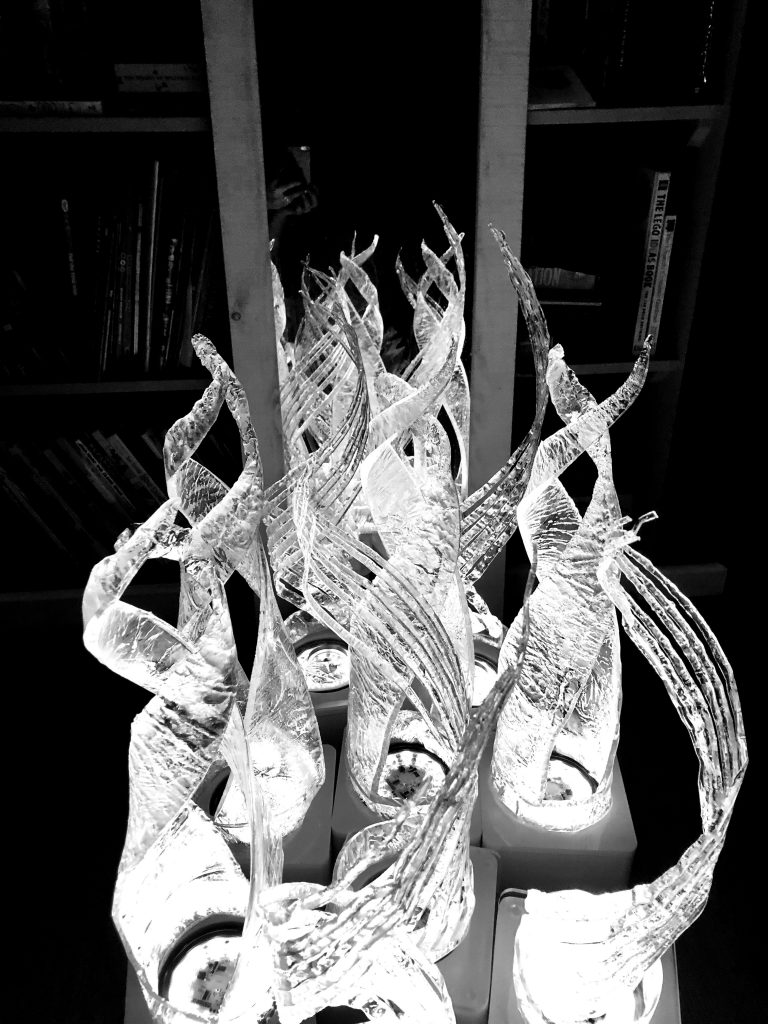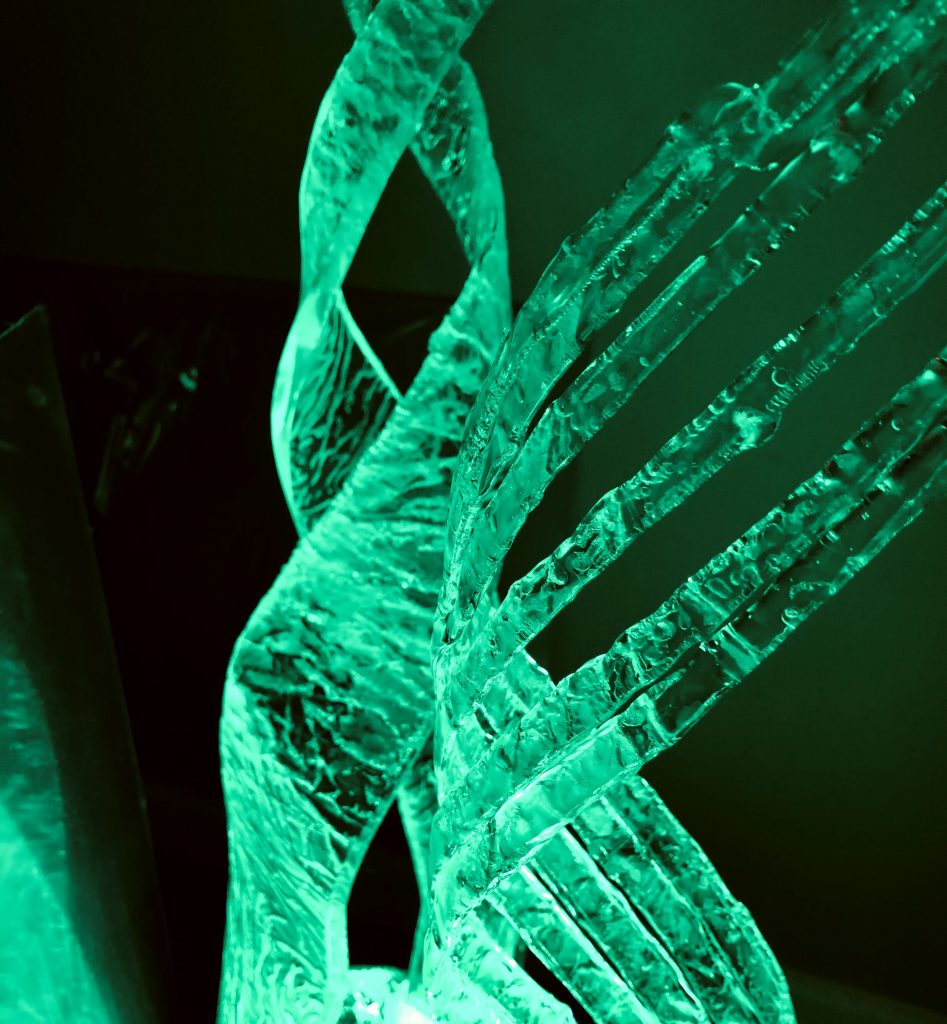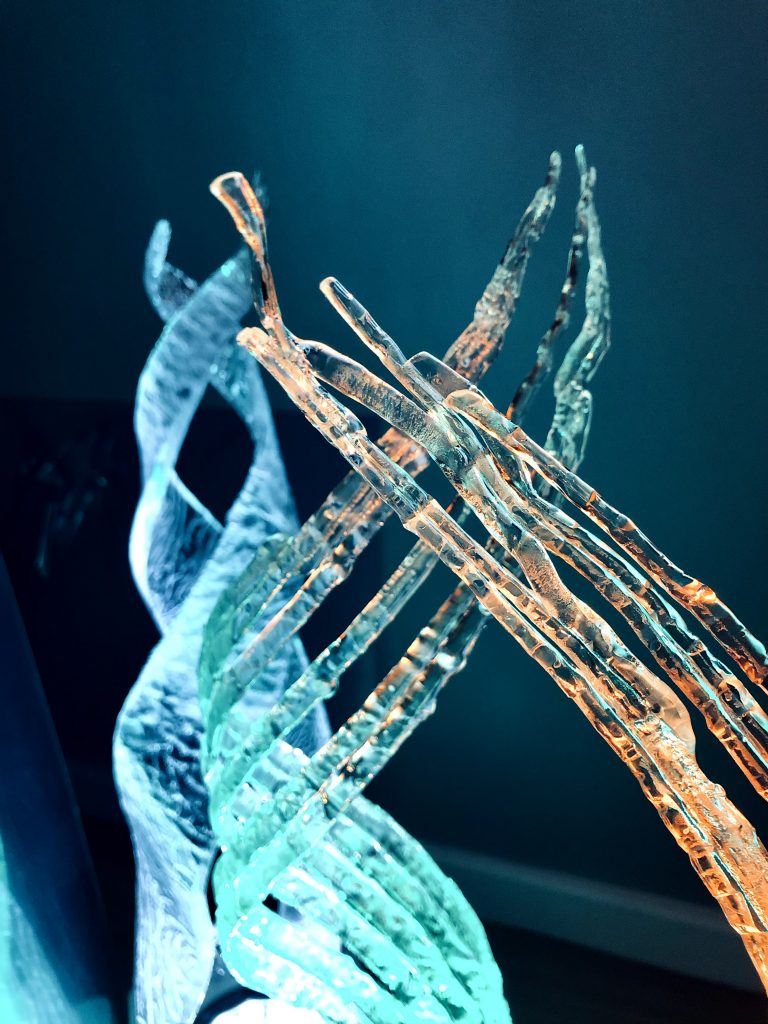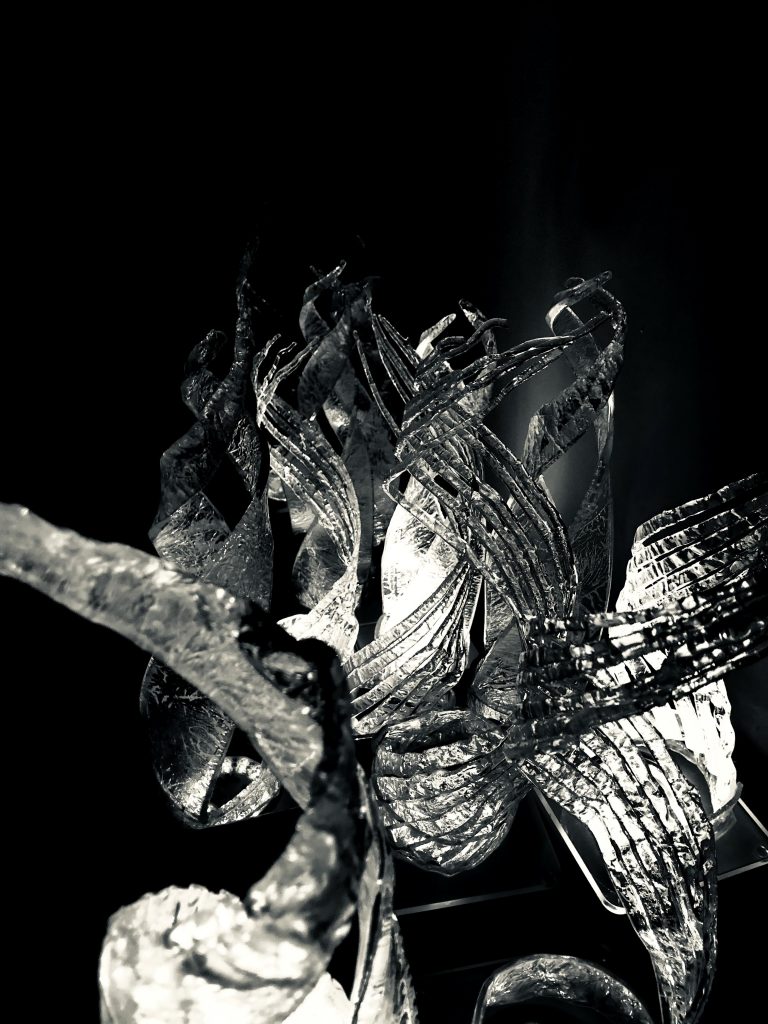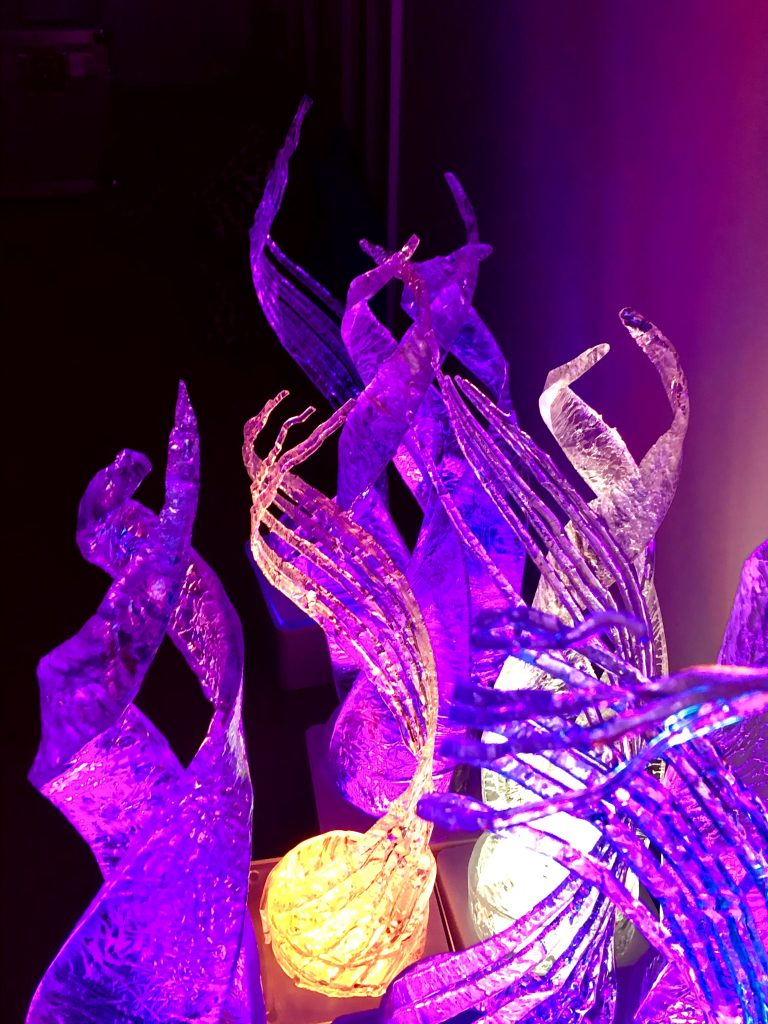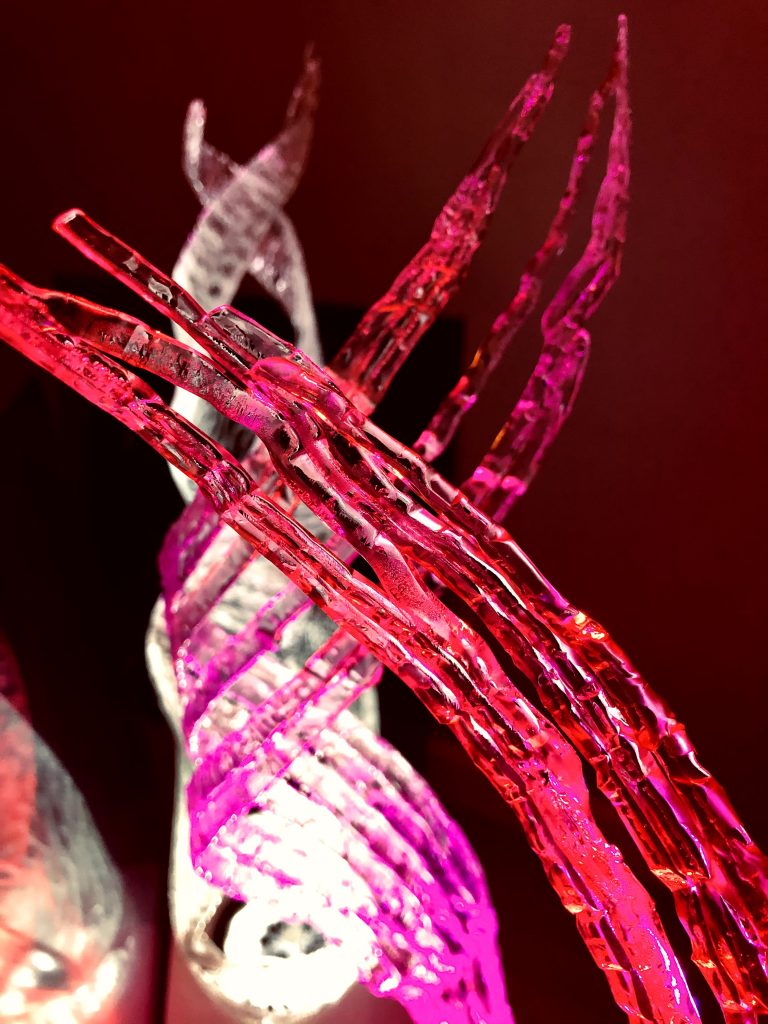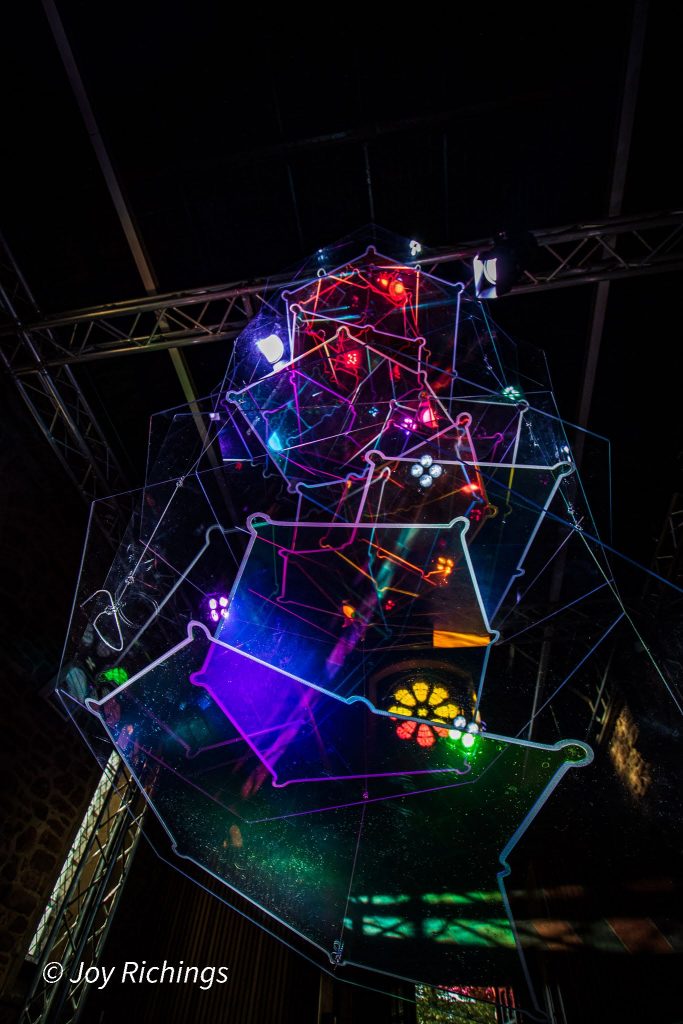
I wonder if mine will be the first Canine visitor tally ACE receives? …
405 people, 2 Dobermans, 9 Yorkshire Terriers, an assortment of poodle crosses and Heinz came along to see my installation - Portrait of a Brain -at the Anglican Chapel in London Rd Cemetery in Coventry at the end of February. A celebration of human cognitive diversity, and a joyful memorial to a neuro-divergent loved one lost (the data realised here being a depiction of this individuals’ particular ADHD spikey-profiled brain).

With additional thanks to Table Art Ltd for fabrication, Do It Solutions Ltd for the Neuro-divergent conditions screening tool that inspired the idea; to producer Suzie Cross who came all the way from Wakefield to bring me an epic lunch! And to City of Culture Producer Hannah Graham for her mentoring and positive affirmation in the very early stages. To the funders of course (Unlimited, and City of Culture) And to everyone who came and spent time with the exhibition and engaged with the ideas within.
I was supported in the space over the 5 days of opening by a brilliant bunch of City Hosts, and by Glass artist Brian Dickinson.
Here are just a few of the team of enthusiastic and engaged City Hosts who volunteered to support me during the exhibition; directing visitors, counting dogs and humans into the space, and spreading the word about Portrait of a Brain to their neighbours and friends. What a crew!
The Anglican Chapel in London Road Cemetery in Coventry, is recently renovated and made accessible for this exhibition by Historic Coventry Trust. It was an ideal venue to site my first significant installation, in this City of Culture year - data art; acrylic, light, colour and sound to delight, inspire and challenge perceptions of human cognitive difference.
Talented local glass artist Brian Dickinson supported with a hand made touch exhibit, and also kept me company for much of the week! Here is Brian with his wife, counting the number of reflections when you look through the layers of the slowly rotating piece.
Lots of children and home school groups visited. Many people told us about their own neuro-divergent conditions, and about the challenges their friends and loved ones experienced. We also heard hopeful stories about finding places and work where ‘spikey’ or irregular cognitive skill sets were celebrated and affirmed, and cognitive challenges were supported.
I loved that so many people took advantage of the floor mats, and lay down under the piece. Mesmerising!
Many of the autistic children that visited (my own included) were particularly transfixed by the colour and light - very stimmy! (well that’s why I like these materials too of course) We gave out lots of pieces of dichroic film for people to play with and experiment themselves.
Some visitors saw airplanes in the reflective light, and one man thought that the shapes etched looked like the city walls themselves. Still others said that they were reminded of chakras, or of the Northern lights.
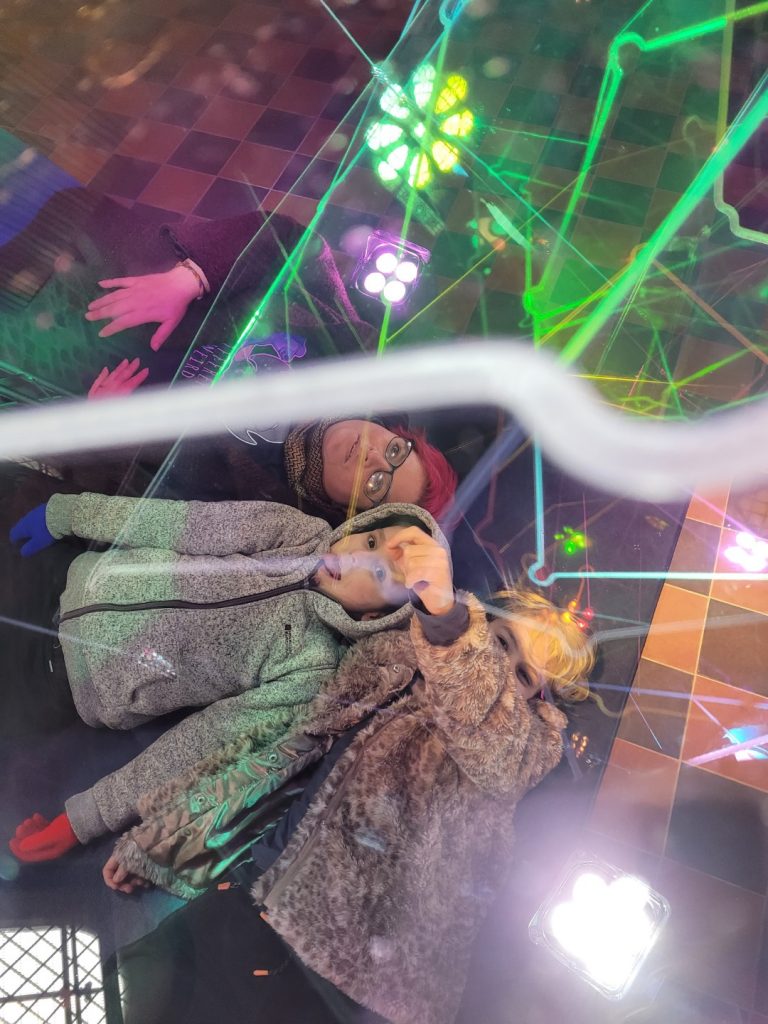
Hanging out under the (very heavy!) suspended acrylic piece!
There’s something about light and colour that most people find joyful and life affirming.
One brilliant boy decided to scrunch up his piece of dichroic film, to create even more spectacular effects. His autistic lateral and creative exploration generating new ideas that no-one else had thought to try !
Yet another child (a girl who was ADHD) took the loose shapes I had left out, and matched them up with the shapes of the main work - asking some brilliant questions and puzzling out for herself what each represented.
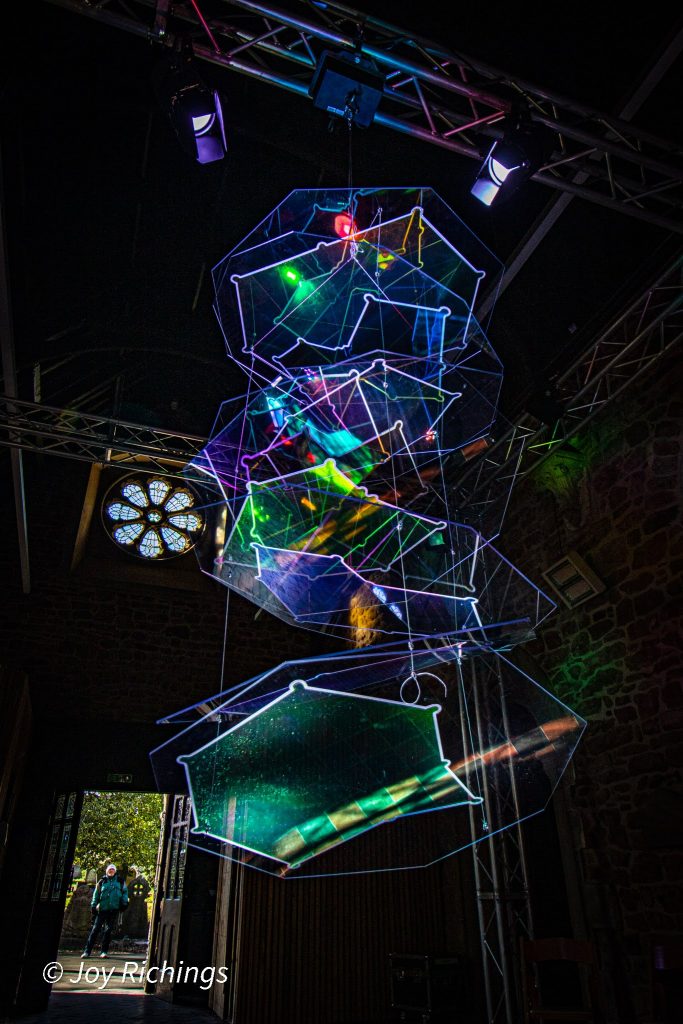
I’m hopeful that this iteration of Portrait of a Brain can be exhibited again soon - we’d love to bring pupils and home school groups to come and interact with the piece with some focussed workshops. If you know of other places that might like to host the piece, please get in touch - i’d love to hear from you!
What’s next?
I’d like to develop this concept further using Virtual Reality technology. And I plan to take this real-life acrylic piece into different spaces too. We all of us change the experience of the very space we inhabit, just by ‘being’ in it. What colour and light and shape do you bring to the spaces that you live in?
Moving light, colour and sound - data art representing an individual spikey human cognitive profile.
